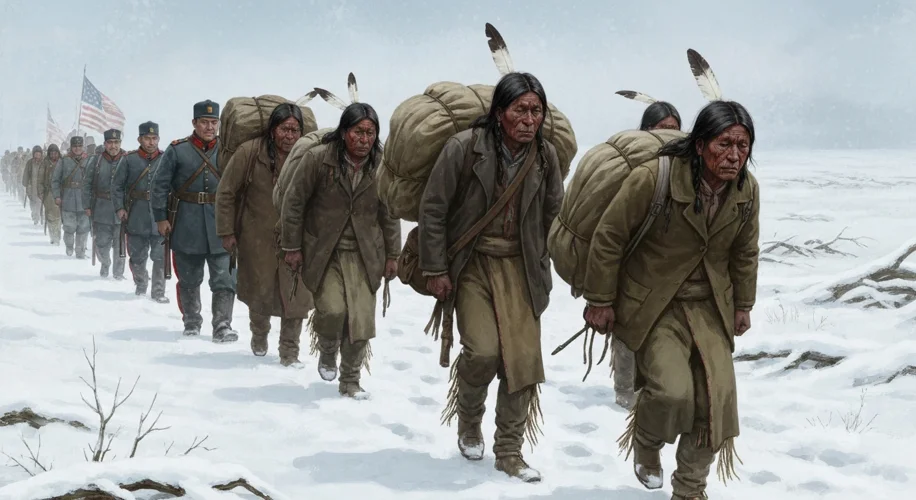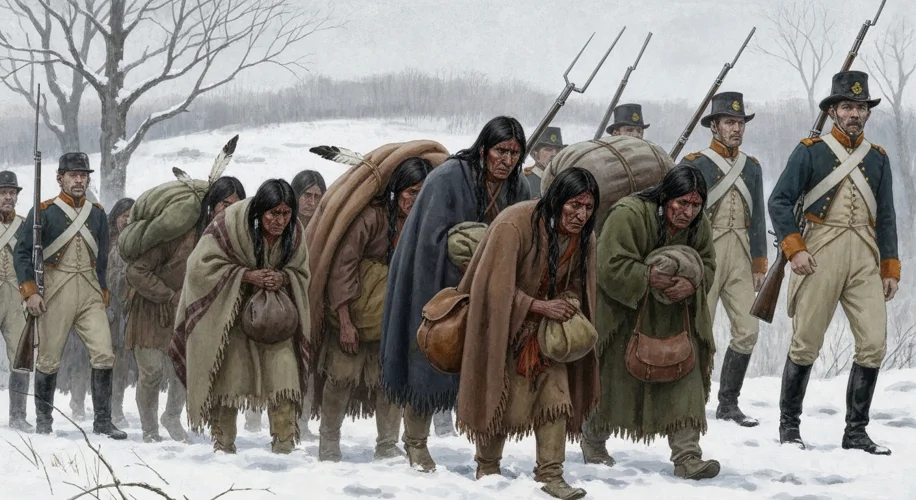The year is 1838. The air in Georgia is thick with the scent of pine and the murmur of a people who have called this land home for centuries. But a storm is gathering, not of wind and rain, but of human cruelty and political ambition. The Cherokee Nation, a vibrant society with its own written language, schools, and a functioning government, stood on the precipice of a devastating chapter in American history.
For decades, the appetite of white settlers for Native American lands had been insatiable. Fueled by the doctrine of Manifest Destiny, an unshakeable belief that the United States was divinely ordained to expand across the continent, the government sought to push indigenous peoples ever westward. The discovery of gold in Cherokee territory in Georgia in 1829 only intensified this pressure, transforming ancestral homelands into a prize to be seized.

At the heart of this conflict stood President Andrew Jackson, a man whose disdain for Native American sovereignty was as profound as his ambition. Jackson, a decorated general with a history of campaigning against Native tribes, saw Native Americans not as sovereign peoples with inherent rights, but as obstacles to American progress. In 1830, he championed the Indian Removal Act, a piece of legislation that, while not explicitly ordering forced removal, provided the legal framework for it. Jackson famously declared, “I am in favor of the removal of the Indians beyond the Mississippi.”
This act set in motion a chain of events that would tear families apart and shatter cultures. The Cherokee, along with the Muscogee (Creek), Seminole, Chickasaw, and Choctaw nations, were targeted for removal from their ancestral lands in the Southeast. While some tribes were coerced into signing treaties, the vast majority, including the Cherokee, resisted. They pursued legal avenues, even taking their case to the Supreme Court. In Worcester v. Georgia (1832), Chief Justice John Marshall ruled in favor of the Cherokee, stating that their nation was sovereign and Georgia had no jurisdiction over them. However, President Jackson, famously defiant, is reported to have said, “John Marshall has made his decision; now let him enforce it.” His administration continued to press for removal, ignoring the Court’s ruling.
Despite the legal victory, the Cherokee were not safe. A small, unauthorized faction of the Cherokee, known as the Ridge Party, negotiated the Treaty of New Echota in 1835. This treaty, signed by only a fraction of the Cherokee population and fiercely opposed by the majority led by Chief John Ross, ceded all Cherokee lands in the Southeast in exchange for territory west of the Mississippi and financial compensation. It was a treaty born of coercion and division, not consent.
When the deadline for voluntary removal passed in May 1838, the United States Army, under the command of General Winfield Scott, began the forced roundup of the Cherokee people. Soldiers descended upon their homes, often at gunpoint, forcing them into hastily constructed stockades. Families were separated, property was confiscated, and the elderly and infirm were left to fend for themselves. The journey that followed became known as the Trail of Tears, a name that speaks volumes of the sorrow and suffering it entailed.
Imagine the scene: thousands of men, women, and children, many of them ill-equipped for the harsh journey ahead, were crammed into crowded, unsanitary conditions. They were forced to march hundreds of miles, often in the dead of winter, with inadequate food, water, and shelter. Disease ran rampant. Exposure, starvation, and sickness claimed the lives of an estimated 4,000 to 6,000 Cherokee people – roughly a quarter of the entire nation – before they even reached their new, unfamiliar territory in what is now Oklahoma. The Cherokee called it Nunna daul Tsuny, meaning “The Trail Where They Cried.”
The Trail of Tears was not merely a physical relocation; it was a cultural uprooting. The Cherokee lost not only their ancestral lands, rich with sacred sites and the graves of their forebears, but also the continuity of their traditions, their social structures, and the very fabric of their identity. The trauma of the removal echoed for generations, leaving indelible scars on the Cherokee people and the collective memory of the United States.
The forced removal of the Cherokee and other Native American nations stands as a stark reminder of the brutal consequences of unchecked expansionism, racial prejudice, and the betrayal of governmental trust. It is a pivotal, and deeply tragic, moment in American history that continues to inform discussions about Indigenous rights, historical injustices, and the ongoing struggle for cultural survival. The echoes of the Trail of Tears serve as a solemn testament to the resilience of the human spirit in the face of unimaginable hardship.

